A triangular wedge A is held fixed and a block B is released on its inclined surface, from the top. Block B reaches the horizontal ground in time t. In another experiment, the wedge A was free to slide on the horizontal surface and it took t’ time for the block B to reach the ground surface after it was released from the top. Neglect friction and assume that B remains in contact with A.
(a) Which time is larger t or t´? Tell by simple observation.
(b) When wedge A was free to move, it was observed that it moved leftward with an acceleration g4 and one of the two measured times (t & t´) was twice the other. Find the inclination θ of the inclined surface of the wedge.
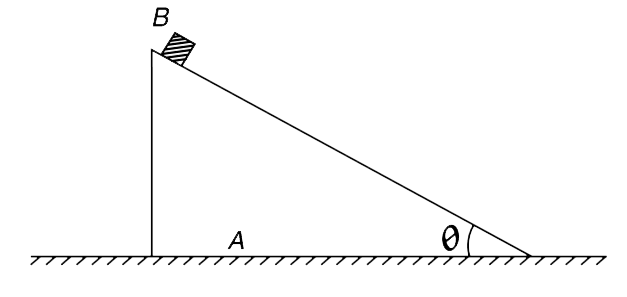
The correct Answer is:(a) t>t1
(b) θ=tan−1(112)
Step by step video, text & image solution for A triangular wedge A is held fixed and a block B is released on its inclined surface, from the top. Block B reaches the horizontal ground in time t. In another experiment, the wedge A was free to slide on the horizontal surface and it took t’ time for the block B to reach the ground surface after it was released from the top. Neglect friction and assume that B remains in contact with A. (a) Which time is larger t or t´? Tell by simple observation. (b) When wedge A was free to move, it was observed that it moved leftward with an acceleration (g)/(4) and one of the two measured times (t & t´) was twice the other. Find the inclination theta of the inclined surface of the wedge. by Physics experts to help you in doubts & scoring excellent marks in Class 11 exams.
Topper's Solved these Questions
Similar Questions
A block is released on the convex surface of a hemispherical wedge as shown in Fig. Determine the displacement of the wedge when the block reaches the angular position θ
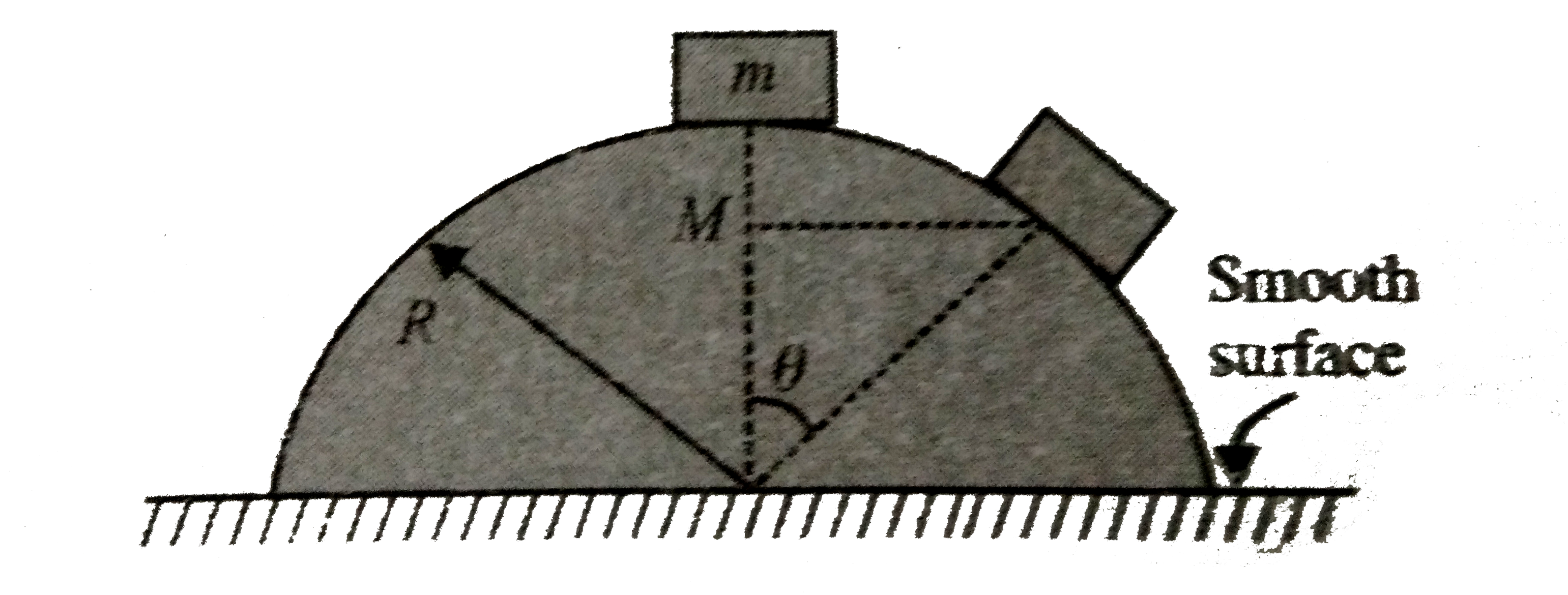 View Solution
View SolutionTwo blocks A and B of equal masses are attached to a string passing over a smooth pulley fixed to a wedge as shown in figure. Find the magnitude of acceleration of centre of mass of the two blocks when they are released from rest. Neglect friction.
 View Solution
View Solution
Knowledge Check
- Question 1 - Select One
A block is sliding on a rough horizontal surface. If the contact force on the block is √2 times the frictional force, the coefficient of friction is
A0.25B1√2C√2D1 - Question 2 - Select One
In the system shown block is released from rest on the inclined surface of the wedge. The acceleration of the wedge will be (assume friction to be absent)
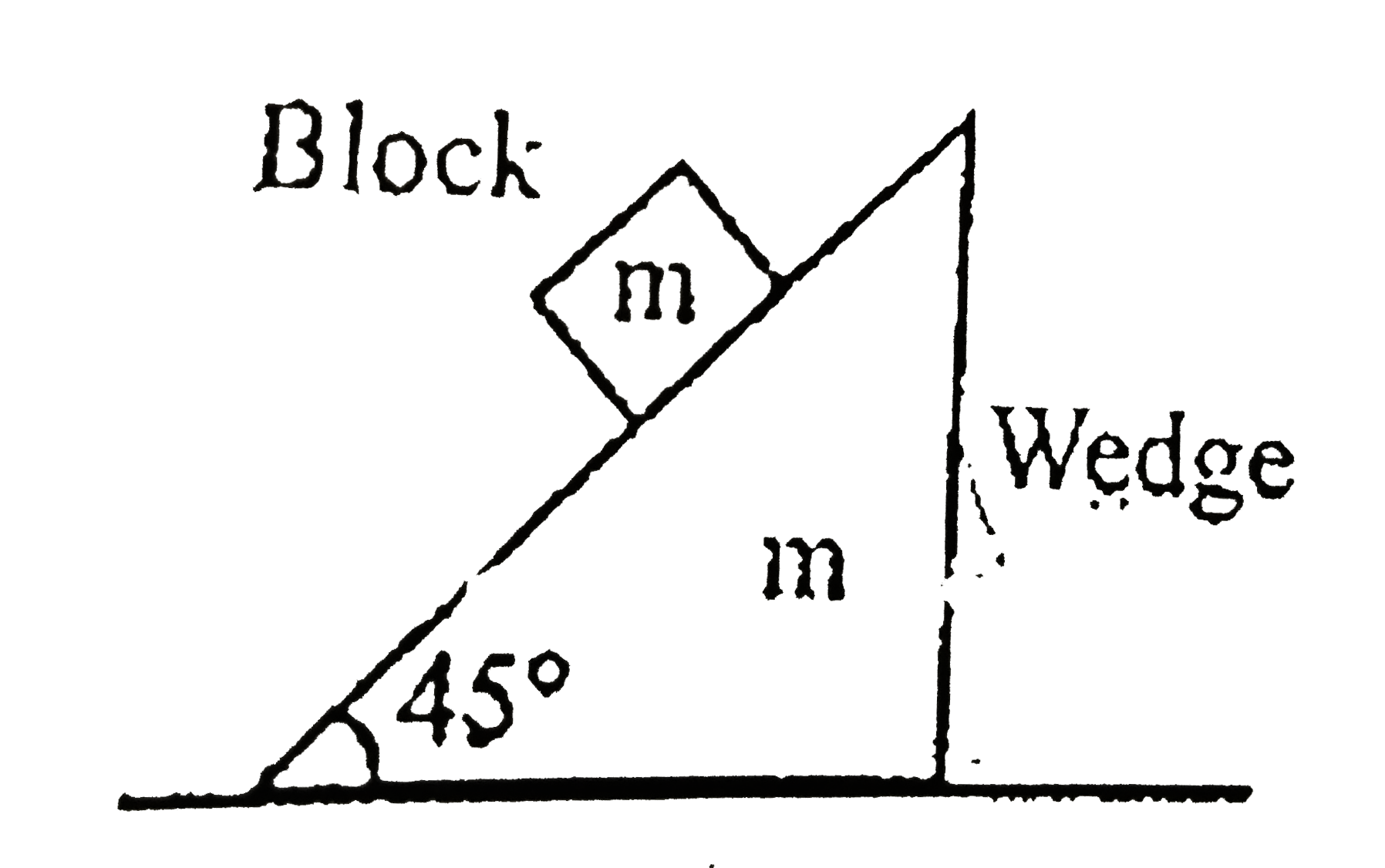 Ag5Bg4Cg3Dg2
Ag5Bg4Cg3Dg2 - Question 3 - Select One or More
A sphere and a block both are released from rest at the top of an inclined plane. After some time they reach the bottom. For all the options assume that angle made by the plane with the horizontal is more than angle of repose.
AIf surface is frictionless then sphere and block reach the bottom simultaneously.BIf surface is rough but not sufficient for pure rolling of sphere then sphere and block reach the bottom simultaneously.CIf surface is sufficiently rough then sphere and block may not reach the bottom simultaneously.DIf surface is sufficiently rough then at the bottom kinetic energy of sphere will be more than that of the block.
A block A (mass 4M) is placed on the top of a wedge block B of base length l (mass=20M) as shown in figure. When the system is released from rest. Find the distance moved by the block B till the block A reaches ground Assume all surfaces are frictionless.
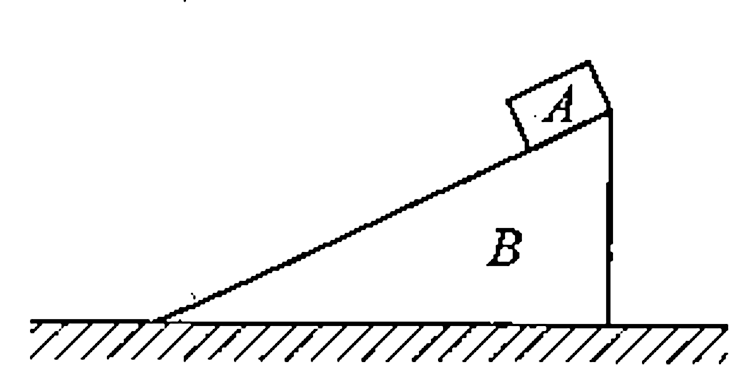 View Solution
View SolutionAll surfaces are smooth Find the horizontal displacements of the block and the wedge when the block slides down from top to bottom
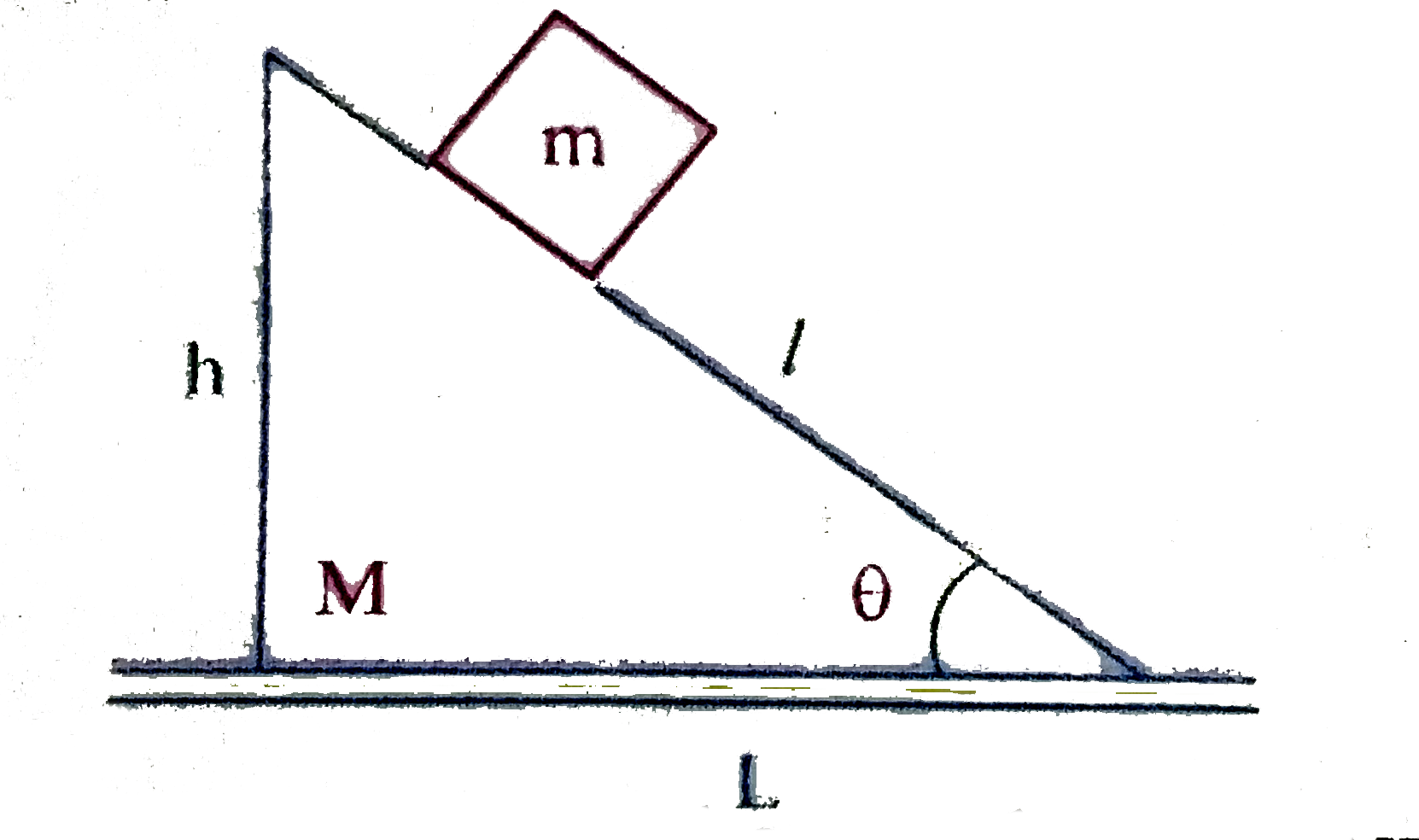 .View Solution
.View SolutionA block of mass m is placed on the inclined sufrace of a wedge as shown in fig. Calculate the acceleration of the wedge and the block when the block is released. Assume all surfaces are frictionless.
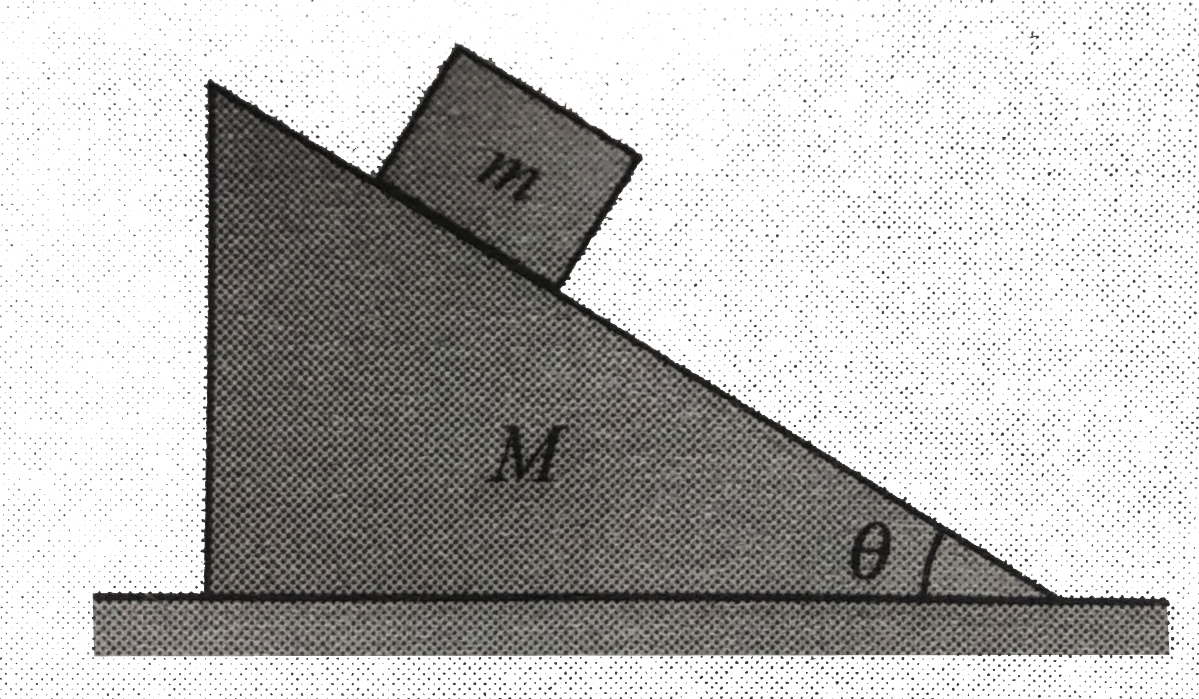 View Solution
View SolutionA block of mass m is released from a wedge of mass m as shown in figure . Find the time taken by the block to reach the end of the wedge.
 View Solution
View SolutionA block of mass m is released on the top of a smooth inclined plane of length x and inclination θ as shown in figure. Horizontal surface is rough. If block comes to rest after moving a distabce d on the horizontal surface, then coefficient of friction between block and surface is :-
 View Solution
View Solution

